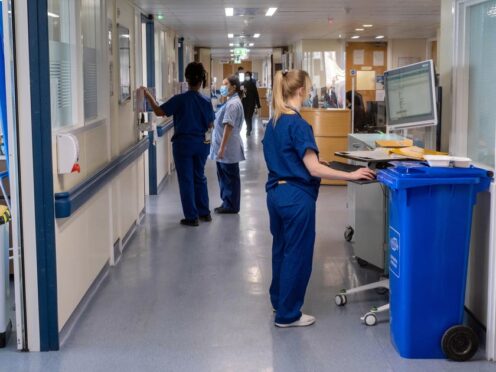Chronic lung disease patients who live in deprived areas or further away from clinics are more likely to die compared with wealthier people who live closer, a study has suggested.
Experts warned the findings highlight “an alarming disparity” that “demands urgent attention”.
The study, led by the University of East Anglia (UEA), analysed data from 2,359 patients with idiopathic pulmonary fibrosis (IPF), which causes the lungs to become scarred and makes breathing increasingly difficult.
Researchers found the risk of death among the most deprived patients was 36% higher compared with the least deprived.
When factors such as smoking, gender, age and distance to hospital were considered, the risk of death was still 39%.
Patients who lived further away from respiratory clinics also had a worse survival rate.
There was a 34% increased risk of death among patients living furthest away compared with those living closest.
When other factors were considered, the risk of death was still 29%.
Professor Andrew Wilson, of UEA’s Norwich Medical School, said: “This is the first time that social deprivation and travelling distance to hospital has been linked to survival for people with pulmonary fibrosis living in the UK.
“People planning hospital services for people for pulmonary fibrosis should consider those living far from hospitals and those from poorer backgrounds to make sure these people get the care they need.”
The study also found that 40% of patients had symptoms for more than two years before being seen in a specialist clinic.
It is estimated that about 5,000 people are diagnosed with IPF each year in the UK.
According to the NHS, the reasons for the condition developing are unclear, although it has been linked to exposure to certain types of dust, viral infections, smoking, acid reflux and a family history of IPF.
Bradley Price, director of policy and public affairs at the charity Action For Pulmonary Fibrosis, said the study “highlights an alarming disparity in healthcare quality and access that demands urgent attention”.
“Where you live or your socioeconomic status should not determine how long you live,” he added.
“This is unacceptable. Change is needed to ensure that everyone has timely access to diagnosis, treatment and care.”
The study, published in Respiratory Medicine, was carried out in partnership with Ulster University, the Department of Respiratory Medicine at the Norfolk and Norwich University Hospital NHS Foundation Trust, and the Interstitial Lung Disease Services for Bristol and Liverpool at Southmead General Hospital in Bristol and Liverpool University Hospitals NHS Foundation Trust.
